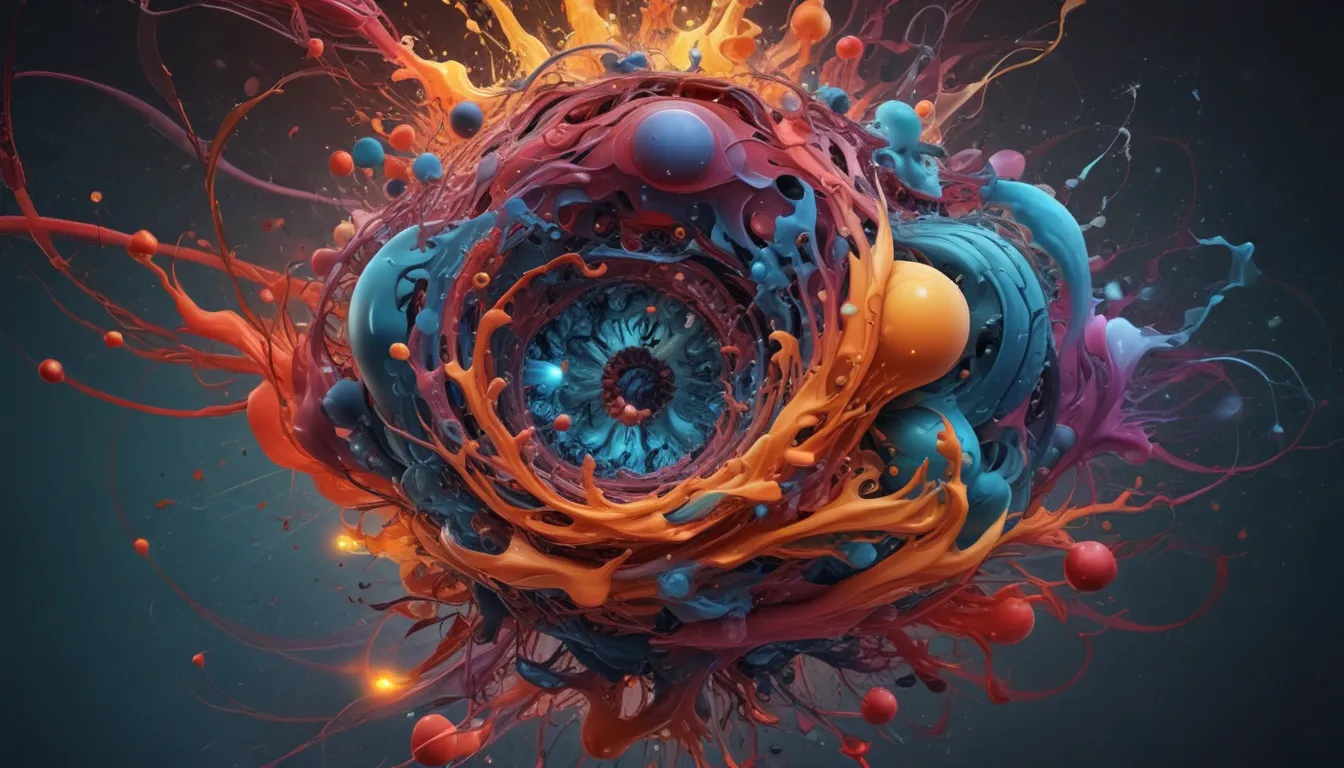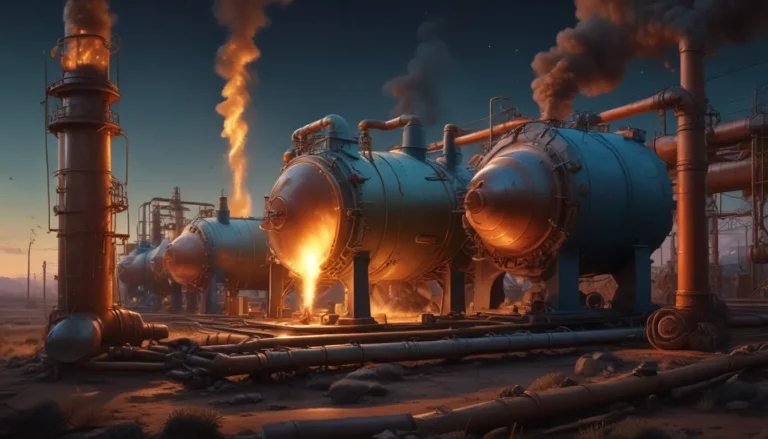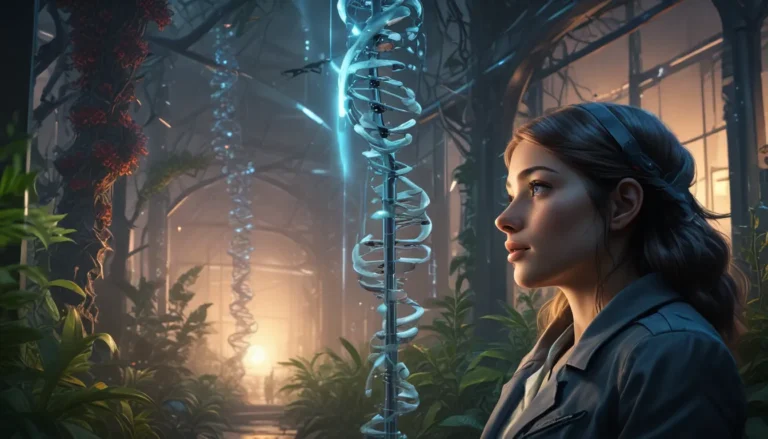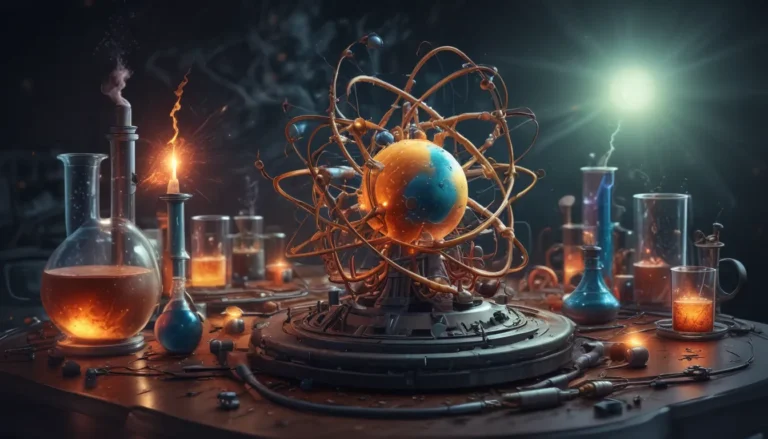A Note About Images: The images used in our articles are for illustration purposes only and may not exactly match the content. They are meant to engage readers, but the text should be relied upon for accurate information.
Welcome to the captivating realm of redox reactions, where reduction and oxidation processes intertwine to create a symphony of electron transfers and chemical transformations. As a fundamental concept in the world of chemistry, redox reactions hold the key to understanding various natural phenomena, industrial applications, and technological innovations. In this article, we will embark on a journey to uncover 19 astonishing facts that shed light on the fascinating intricacies of redox chemistry. From the role of redox reactions in energy conversion to their impact on environmental processes, get ready to be amazed by the captivating world of electron exchange and oxidation states.
Redox Reactions: The Essence of Chemistry
At the core of chemistry lies the realm of redox reactions, where electrons dance between chemical species, reshaping their oxidation states in a perpetual cycle of reduction and oxidation. These fundamental reactions underpin a multitude of natural processes and industrial applications, shaping the world around us with their transformative power.
The Dance of Reduction and Oxidation
The term “redox” derives its essence from the amalgamation of reduction and oxidation, two pivotal processes in the domain of chemistry. Reduction entails the gain of electrons by a species, while oxidation involves the loss of electrons. Together, these processes give rise to a dynamic interplay of electron transfer, fueling the transformative nature of redox reactions.
Electrons in Motion
Central to redox reactions is the mesmerizing movement of electrons from one entity to another. Electrons, the negatively charged particles that pirouette around the nucleus of an atom, play a pivotal role in catalyzing the exchange of charge during redox reactions. As electrons traverse between atoms, ions, and molecules, the landscape of chemical bonds is reshaped, heralding a change in the overall charge and structure.
Unveiling the Magic of Energy Conversion
Redox reactions stand as the cornerstone of energy conversion processes, orchestrating the release and absorption of energy through the divine art of electron transfer. From the fiery dance of combustion to the serene symphony of photosynthesis, these reactions serve as the dynamic force behind the generation and utilization of energy in the natural world.
Rusting: A Symphony of Oxidation
A familiar melody in the repertoire of redox reactions is the process of rusting, where iron surrenders itself to the embrace of oxygen in the presence of water, undergoing a poignant transformation. As iron sheds its electrons to oxygen, the landscape is tinted with the hues of iron(III) oxide, a poignant reminder of the enduring tale of oxidation.
Balancing the Equations of Redox
Just as in any harmonious ensemble, redox reactions require a delicate balance to manifest their true beauty. Balancing redox equations involves harmonizing the number of electrons lost in the oxidation half-reaction with those gained in the reduction half-reaction, ensuring a symphonic equilibrium in the exchange of charge and energy.
Batteries: The Melody of Redox Energy Storage
In the realm of batteries, redox reactions compose a melodic symphony of energy storage and release. From the cadence of the anode’s oxidation, releasing electrons into the void, to the crescendo of the cathode’s reduction, embracing those lost electrons, batteries harness the power of redox reactions to store and deliver electrical energy.
Orchestrating Redox Signaling in Biology
Within the intricate tapestry of biological systems, redox reactions conduct a sublime symphony of cellular signaling, orchestrating the dance of electrons between molecules to regulate vital physiological processes. Through the art of electron transfer, specific biochemical pathways are activated or silenced, shaping the rhythm of life itself.
Ozone: A Masterpiece of Redox Reactions
In the ethereal expanse of the Earth’s stratosphere, redox reactions unveil a masterpiece in the form of ozone formation. Through the intricate ballet of electron transfers, oxygen molecules harmonize to create ozone, a vital guardian of the delicate balance of our atmosphere.
Metabolism: The Energetic Overture of Redox Reactions
At the heart of metabolism lies the energetic overture of redox reactions, where food molecules are dissected, energy is released, and essential molecules are crafted to sustain the symphony of life within living organisms. Through the harmonious interplay of reduction and oxidation, the sustenance of life finds its crescendo in the dance of redox chemistry.
Corrosion: The Bittersweet Ballad of Redox Reactions
In the melancholic ballad of corrosion, redox reactions compose a bittersweet narrative of material degradation and transformation. As metals succumb to the tender embrace of moisture and oxygen, oxidation paints a somber portrait of metal oxides, marking the passage of time and decay in the world of structures.
Environmental Remediation: A Harmonious Rebirth through Redox Reactions
In the symphony of environmental remediation, redox reactions herald a harmonious rebirth through the decomposition of pollutants and the restoration of ecological balance. These transformative reactions break down harmful substances into gentler forms, offering a hopeful refrain in the chorus of environmental cleanup.
Medicine: The Healing Symphony of Redox Reactions
Within the healing embrace of medicine, redox reactions conduct a healing symphony of antioxidants and free radicals, orchestrating the delicate dance of cellular protection. Antioxidants, through the grace of redox reactions, shield cells from harm by neutralizing free radicals, offering a soothing cadence to the tumultuous melody of cellular stress.
Photography: Capturing Moments with Redox Reactions
In the artful canvas of photography, redox reactions illuminate the path to capturing fleeting moments in a timeless tableau. Through the alchemy of silver ions reduced to metallic silver and developing agents oxidized to unveil images, redox reactions weave a tapestry of memories that transcend time and space.
Fuel Cells: Harnessing the Power of Redox Reactions
Fuel cells harness the potent energy of redox reactions to generate electrical power, unveiling a dynamic symphony of oxidation and reduction in the pursuit of sustainable energy solutions. From the anode’s siren song of hydrogen oxidation to the cathode’s ballet of oxygen reduction, fuel cells choreograph a harmonious flow of electrons to power our world.
Environmental Redox Potential: A Barometer of Electron Harmony
Environmental redox potential acts as a barometer of electron harmony, measuring the capacity of a system to donate or accept electrons in the grand symphony of redox reactions. By influencing microbial processes and nutrient cycles, redox reactions shape the landscape of natural environments, guiding the delicate balance of life and energy.
Industrial Alchemy: Redefining Processes through Redox Reactions
In the crucible of industrial applications, redox reactions redefine processes through their transformative power, offering a symphony of electron transfer in chemical synthesis, metal production, electroplating, wastewater treatment, and other realms of industrial alchemy. By illuminating the path to electron exchange, redox reactions catalyze innovation and progress in the world of industry.
Energy Storage: The Harmonious Resonance of Redox Flow Batteries
Efficient energy storage resonates with the harmonious cadence of redox flow batteries, storing energy through reversible redox reactions in a symphony of electron exchange. As a promising solution for large-scale energy storage, redox flow batteries conduct a melodic interplay of reduction and oxidation to power the world of renewable energy systems.
Geological Musing: Redox Reactions in the Earth’s Crust
In the geological tapestry of the Earth’s crust, redox reactions paint a vivid landscape of mineral distribution and formation, shaping the very foundation of our planet. From soil genesis to ore deposition, these reactions sculpt the terrain with their transformative power, offering a glimpse into the grand symphony of geological processes.
In Conclusion
As we conclude our exploration of the enchanting world of redox reactions, we are reminded of the profound impact of these fundamental processes on our world. From the orchestration of energy conversion and environmental cleanup to the synthesis of essential molecules and the creation of lasting memories, redox reactions emerge as ubiquitous players in the grand symphony of chemistry and life itself. By unraveling the mysteries of electron exchange and oxidation states, we deepen our understanding of the world around us and pave the way for innovation and discovery in science and technology.
FAQs
-
What is a redox reaction?
A redox reaction involves the transfer of electrons between molecules, resulting in changes in the oxidation states of the elements involved. -
What are oxidation and reduction?
Oxidation refers to the loss of electrons or gain of oxygen by an element, while reduction involves the gain of electrons or loss of oxygen by an element. -
Can you provide an example of a redox reaction?
The rusting of iron, where iron reacts with oxygen in the presence of moisture to form iron(III) oxide, is a common example of a redox reaction. -
How are redox reactions important in everyday life?
Redox reactions play a crucial role in processes like combustion, respiration, and photosynthesis, impacting energy production, metal extraction, and battery function. -
How do redox reactions occur in the human body?
In the human body, redox reactions are involved in metabolic processes, breaking down food molecules for energy release and facilitating immune responses. -
Are redox reactions reversible?
Yes, redox reactions can proceed in both forward and backward directions, depending on the conditions and availability of reactants and products. -
Can redox reactions be balanced?
Redox reactions can be balanced using stoichiometry principles, ensuring the conservation of atoms, charges, and electrons for a harmonized equation. -
Do all chemical reactions involve redox reactions?
Not all chemical reactions involve redox processes, as there are other types like acid-base reactions and precipitation reactions that do not entail electron transfer. -
What are the practical applications of understanding redox reactions?
Understanding redox reactions aids in developing catalysts, understanding corrosion processes, and designing efficient batteries and fuel cells for applications in environmental science, medicine, and energy production. -
How can I learn more about redox reactions?
Resources like chemistry textbooks, online educational platforms, and guidance from chemistry educators can provide in-depth insights into the realm of redox reactions, paving the way for a deeper understanding of these essential chemical processes.






